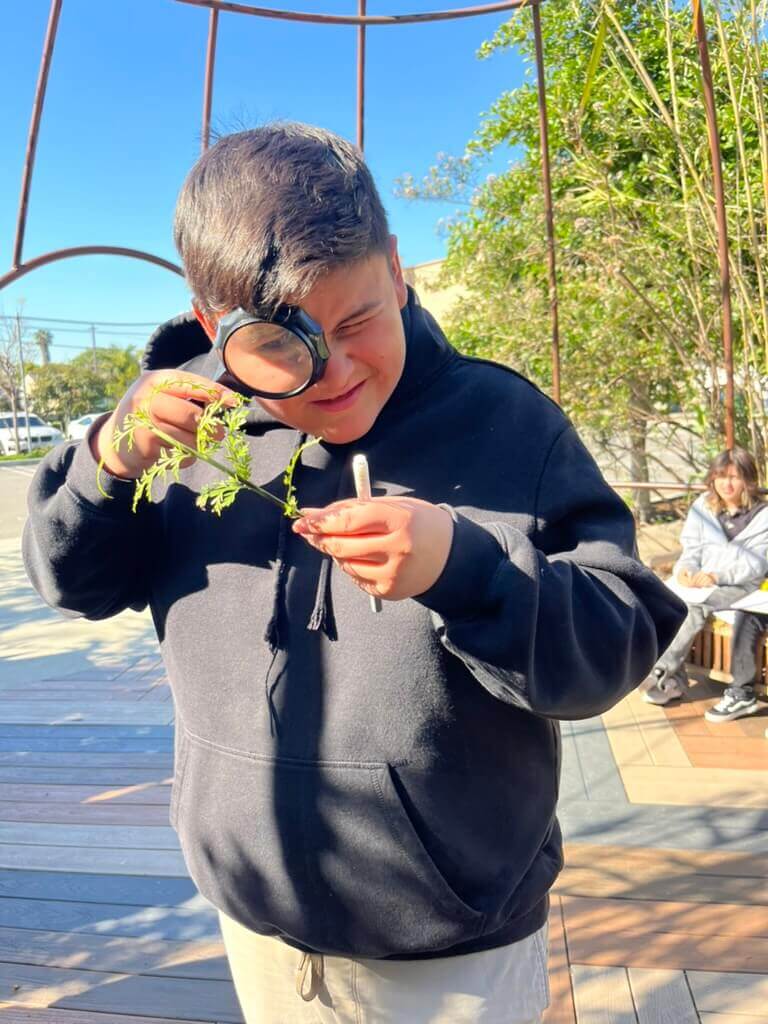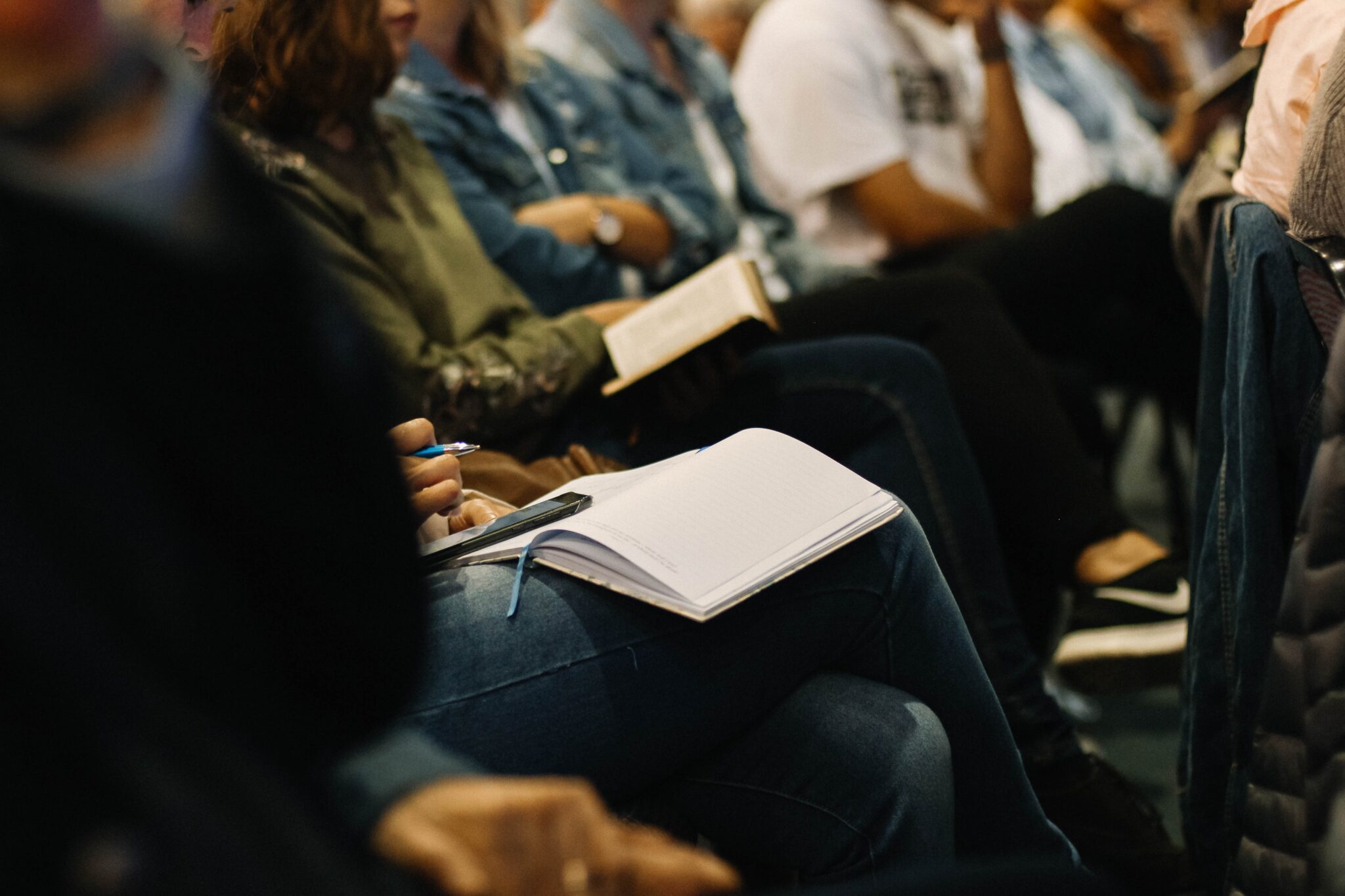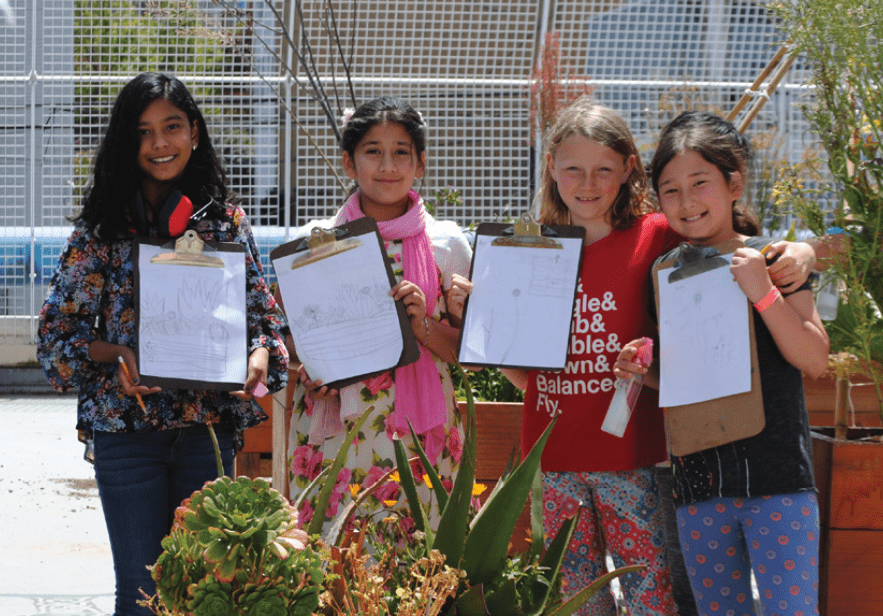On Tuesday, January 7, 2025, a fast-spreading blaze in the Los Angeles area left Angelenos in shock and disbelief. As the unprecedented Palisades Fire spread faster and farther than ever expected, the Eaton Fire ignited and became a contender for the fastest-spreading blaze in the Los Angeles area.
While entire neighborhoods were engulfed in flames, Environmental Charter Schools (ECS) students were scheduled to return to school the following day after three weeks of holiday break. Teachers had been busy planning and preparing their classrooms for the new semester, but as the skies filled with ash and the air started to choke out the sun, the leadership team at ECS knew they had to act—fast. The safety and well-being of students and staff became the school’s immediate concern, but what could they do in response to such an overwhelming crisis?
Danielle Kelsick, ECS’s director of curriculum and instruction, reflected on their approach, “Our COVID response playbook prepared us. It trained us to assess a situation, pivot rapidly, and make decisions rooted in equity and environmental literacy.” The unpredictability of the pandemic had forced school leaders to embrace flexibility, and those lessons proved invaluable during the wildfires.
From Pandemic to Wildfire Response: Lessons in Agility
Amid the uncertainty, ECS leaders turned to a framework they had refined during the pandemic. “Daily scrums—developed during COVID—became critical,” Kelsick explained. These quick, structured check-ins helped leadership track evolving conditions, ensuring alignment across teams. “We focused on the strengths of our leadership team and began identifying action items creating a layered approach to our response where everyone had a purpose and directive that supported the overarching goal of safety, support, and learning.”

Constituent surveys—another tool refined during the pandemic—were conducted to ensure that leadership’s perceptions matched the lived experiences of students, families, and staff. “We couldn’t just assume what people needed,” Kelsick said. “We had to listen first.” Those constituents included staff, teachers, families, and students. See ECS’s Town Hall here.
ECS schools are located in the South LA and South Bay communities of the city and were not directly impacted by the path of the fires. However, air quality became the primary concern. A day before welcoming students back, the schools had to pivot quickly and modify plans to rainy day schedules where students spend a very limited amount of time outside. They made sure campuses were re-stocked with N95 face masks and leaned on its operations team, who quickly assessed indoor air filtration systems and procured purifiers for use that next morning. ECS’s Air Quality Tracker can be viewed here.
The Student Social Service teams began working on support for families who may have been impacted by the hazardous air quality, and Human Resources began gathering and sharing resources for faculty and staff. Instructional specialists developed lesson plans to educate stakeholders about air quality index and wildfires, reinforcing ECS’s mission of environmental literacy. “Knowledge is power,” Kelsick stated. “Understanding air quality empowered our students and families to make informed decisions about their health.”
Prioritizing Mental Health
Wildfires disproportionately impact underserved communities already burdened by environmental injustices. While no single ECS family faced direct displacement, the emotional toll was undeniable. “Our response wasn’t just about safety—it was about support,” Kelsick emphasized. ECS families showed their support to wildfire victims in a donation drive.

Kelsick visited each of the four ECS campuses, checking in personally with each staff member. “How are you doing? How is your family?” were the most important questions of the day. “These weren’t just casual conversations,” Kelsick said. “They were strategic. They allowed me to assess needs and respond accordingly.” Once she was able to determine that the community had not faced direct impact, it allowed her to revise the response strategy to fit the actual need.
Students, too, were given space to process. Surveys gauged emotional well-being, while social-emotional learning lessons provided coping strategies. ECS’s commitment to environmental literacy extended beyond science—it encompassed mental resilience in the face of climate crises.
ECS decided to close down for the rest of that week, which was not an easy decision considering students had already been out of school for almost a month. The fact that 92-98% of students showed up the first day back from break despite the ongoing fires speaks to the safety they feel at school. “We try to remain open because our families depend on us and our students like being at school and they love being outside while at school,” shared a teacher at the Inglewood campus. However, some students and staff expressed mixed feelings about the “business as usual” mindset amidst this tragedy. High school students at the Lawndale campus shared their confusion and debated whether businesses and schools should be open during an active disaster and extreme weather event in their Green Ambassador class. Winds were still blowing at extreme speeds and gusts were fanning the flames of a fire that was 0 percent contained.
As a precaution, and in alignment with neighboring districts, ECS decided to close for two days due to poor air quality, which felt very similar to the beginning of COVID and activated anxiety in some.
Equity in Emergency Planning
Disasters don’t affect communities equally, and ECS ensured its response accounted for vulnerable student populations, including English language learners and students with disabilities. Communication was adapted across multiple formats to ensure accessibility and school leaders leaned on existing roles to distribute responsibility efficiently. “We didn’t reinvent the wheel,” Kelsick noted. “We organized around what was already working.”
Looking ahead, ECS is integrating these lessons into future emergency preparedness plans with equity at the forefront of decision-making. The school is revisiting documentation from both COVID and wildfire responses, refining protocols that prioritize safety, learning, and emotional well-being.
“What matters most?” Kelsick posed. “No more than three things at a time. That’s how we lead in crisis.”
As wildfires become an increasingly frequent reality in Los Angeles, ECS’s response serves as a model for schools navigating climate-related disasters. Through a commitment to environmental literacy, equity, and community-centered leadership, they are proving that when your city is burning, you don’t just react—you adapt, you support, and you educate.
For more information on wildfires in Los Angeles, visit LA Wildfire Information.
Learn more about the CAELI Equity Initiative here.







